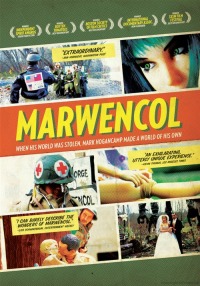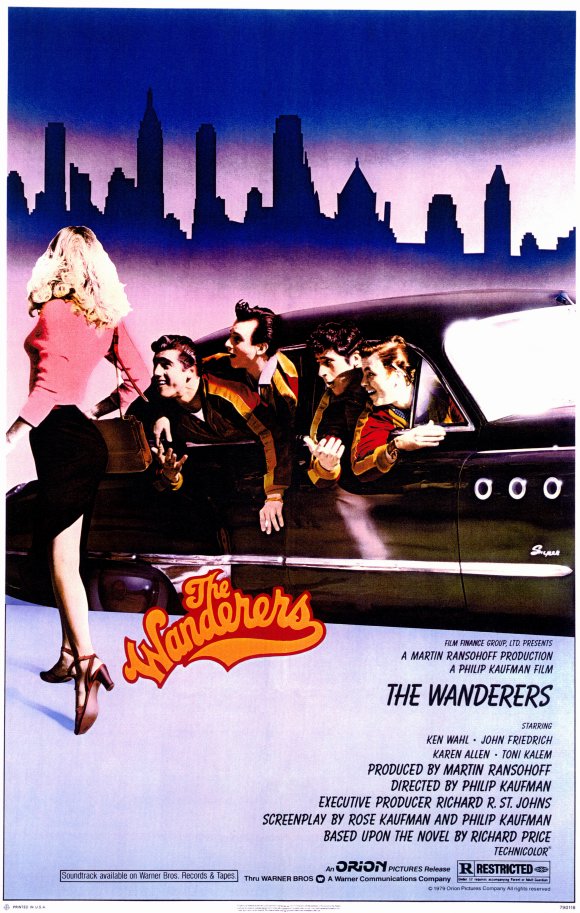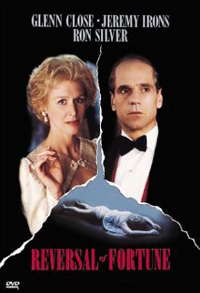Marwencol
 On April, 8, 2000, Mark Hogancamp was brutally attacked in a bar in Kingston, New York. His attackers were five teenagers, and the damage done was horrific. Plastic surgery was needed in order to repair his face and he was in a coma for nine days. When he came to, his memory and motor skills had been erased. He was hospitalized for 40 days until his medical insurance could no longer pay for his treatment and he was released. At 38 and without a means of income, he had to build his life from scratch.
On April, 8, 2000, Mark Hogancamp was brutally attacked in a bar in Kingston, New York. His attackers were five teenagers, and the damage done was horrific. Plastic surgery was needed in order to repair his face and he was in a coma for nine days. When he came to, his memory and motor skills had been erased. He was hospitalized for 40 days until his medical insurance could no longer pay for his treatment and he was released. At 38 and without a means of income, he had to build his life from scratch.
This documentary is separated into ten chapters which chronicle Mark's outstanding efforts to reclaim his life and latch on to the only thing that wasn't taken away by his attackers: his imagination. Chapter 1 is titled “The Attack” and it introduces us to many people in Mark's life. The first is his attorney, but it’s an introduction that is far from ordinary. Standing still is Emmanuel Nneji, his attorney, and to the right of the screen is a 1/6 scale toy figure in his likeness. Nneji presents us with the facts of the case and, occasionally, video clips of the bar and photos of Mark's disfigured appearance after the accident.
Sound and Fury

I feel as though children are often approached by adults without respect and deprived of some very rewarding chances in life. Sound and Fury deals with the introduction of new technologies within deaf communities and the controversy it has sprouted. Two brothers, Chris and Peter, are dealing with a family crisis. Chris has healthy hearing, while his brother Peter was born deaf. Each is married with children. Peter and his wife Nita have a son and daughter who are deaf, and one of Chris's infant twin sons is also deaf. Chris and his wife Mari have decided to go through a surgical procedure to give their son a cochlear implant—a device that can restore hearing. Peter's daughter Heather becomes aware of the procedure and its advantages and asks her parents if she can also have the procedure performed.
The families have relatives and friends who are deaf and have come to see their deafness as a culture. For them, being deaf gives them a sense of community and a peaceful, dramatic way of communicating that others don't experience. But for those in the family, especially Heather's grandmother who is not deaf, the procedure can offer a world of endless possibilities for Heather. Peter and Nita, however, feel that their daughter is perfect the way she is and that changing her view of the world with sound might separate her from their community, and from them.
Continue ReadingEncounters at the End of the World

It’s an uncontestable fact that Werner Herzog is the greatest living director. His latest documentary Encounters at the End of the World may not be as cathartic or controversial as his dramatic features, but it validates Herzog’s ability to personalize every film that he directs with the creation of hypnotic, surreal images, images that despite their otherworldliness symbolize a litany of urgent, undeniable truths. The most famous of these are the 360-ton steamship being pulled over a hill in the Amazon rainforest in Fitzcarraldo, as well as the dancing chicken and interminable ski-lift ride in the finale of Stroszek. People who have seen multiple Herzog films walk away with images they hold personally to them, like amulets; for me it’s Kaspar Hauser standing immobile in the village square clutching a letter that he can’t read. Only a director like Herzog could go to edge of the planet and make a film that is idiosyncratic.
Herzog and his cinematographer Peter Zeitlinger (his DP for the majority of his films since Gesualdo) received a grant from the National Science Foundation’s Antarctic Artists and Writers Program to travel to Antarctica for several months to shoot footage for a documentary. The director seems to express ambivalence at the beginning of the film about his suitability for the subject, saying that he’s not interested in making a movie about “fluffy penguins.” Ironically, he ends up shooting some of the cutest baby and mommy seal footage I’ve ever seen. It eventually becomes apparent that Herzog’s focus is not so much the landscape as it is the modern day explorers who have come to study the frozen continent. The bleak landmass has become a magnet to a millenarian mixture of scientists, engineers, cooks, survival experts, and ice terrain vehicle drivers who believe that the secret of the earth’s future, and perhaps demise, is hidden in the landscape and wildlife of this frozen desert. Herzog compares these people driven to the end of the map by their dreams to adventurers like Ernest Shackleton and Roald Admundsen, forsaking comfort and civilization to be near the Unnameable.
Continue ReadingSquatterpunk

This documentary, shot in a day and following the rambunctious pastimes of a young boy named Hapon, left me in the middle of two unsettling thoughts. Maybe they were impulses, and perhaps in a week I'll feel differently. I haven’t quite recovered from the moral confusion. The first thought was to reject the glorification of the slums and squatters in the Philippines that are documented here. The film follows Hapon and a large amount of children who sort of see him as an icon. The back of the DVD compares the film to seeing children playing at a car crash. Believe me, it's much worse. The beach they swim in is overflowing with garbage and debris; the toddlers roam the dusty streets without diapers and relieve themselves in alleyways. Hapon prances around with his distinguished Mohawk like a king, and yet his open sores have flies hovering over them. The film has no dialogue. It's set against punk music, shot in black and white, with the edgy quality of a skate film. And it shows confident children, satisfied with their play and overjoyed at the thought of someone wanting to document their existence. Hapon and his friends, while malnourished and left unattended, carry a familiar spirit. They are tiny anarchists who enjoy being enveloped in anarchy—no rules, no enforcement, and absolutely no parental control. My second thought following a short-lived disgust is that I'd envy this free-spirited childhood, were it not for the realization that I would have to be happy with the fact that I might not reach adulthood.
The adults are certainly not getting along any better, and like the children, they don't seem to care. They sit in shacks playing cards or sing karaoke in bars—some chagrined, but most very confident. Another jarring aspect of daily life in this city is the commingling of children and adults. There is a shot of a bar where a man is passed out at the counter, and next to an empty pitcher of malt-liquor is a bored toddler. Age seems to have no relevance at all, as minors and elders share the same fate. While the adults have their alcohol, the young children sit underneath a pier and huff chemicals out of plastic bags. The lack of culture was also startling. Like most other countries that have had a relationship with America, citizens of Manila are highly westernized. They have the donated hand-me-downs of the West, and those small "treasures" are seemingly enough. It gives the impression that one must be able to afford culture, or at the very least have the means to hang onto it. The shantytown is filled with American garbage, from bicycles and Mickey Mouse t-shirts and every other useless thing in between. You begin to wonder what the city used to look like, and how quickly it fell into despair.
Continue ReadingFlight from Death: The Quest for Immortality

This compelling documentary, narrated by Gabriel Byrne, uncovers the bittersweet consequences of our efforts as humans to try to avoid death for the longest time possible. It begins by explaining the phenomena on a more scientific level, touching on animal instincts to survive and pointing out that we are the only species that carries a "burden of anxiety" in terms of our own death. All other animals live only in present danger when confronted by their fears, and we do as well when directly threatened. But unlike other animals, we are aware that we will one day die. Not only do we take precautions avoiding death, but we perform various efforts to try and leave a lasting impression before we go.
Experimental social psychologists Sheldon Solomon and Jeff Greenberg are introduced in this documentary, along with several other professors of humanities, ranging from religion to psychoanalysis. Many of them have formed their ideas on "death denial" from the studies done by Ernest Becker, a Pulitzer Prize winning author who worked exclusively on the concept. With these investigations, they have tried to find a way to unravel the positive and negative effects of death denial. You’d be surprised to find out which areas they believe this denial reaches in our subconscious, and what it causes us to do.
Continue ReadingCat Dancers

The only magic I believe in is the magic of documentaries like this. It had the power to reach deep down into my soul and turn on a switch in a room that’s been dark for years. Honestly, it is the most beautiful love story that I have seen to date—a love of life, animals, dance, God, and intimacy.
Ron and Joy Holiday were two childhood friends who set out to make a name for themselves in the dance world, more specifically adagio ballet. Ron’s first few stories of Joy are small and candid, mainly circulating around her Catholic upbringing. One in particular that is essential to their future together comes from Joy visiting a Mother Superior with the uncertainty of whether she should continue her future in dance after college or become a nun. "Go to New York and dance for God," was the answer she received, and it was after that story that I knew this documentary had much in store.
Continue ReadingThe Wanderers
 That period in American history as the country moved from the Eisenhower conformism of the ‘50s to the freedom of the ‘60s has made for some wonderful films (American Graffiti, Baby It’s You), even if they often prove to be overly wistful. The Philip Kaufman film The Wanderers, based on Richard Price’s great novel, captures this period perfectly. It takes place in 1963 and though these teenagers of the Bronx who are the film's subject do stop to watch some JFK assassination news, they have no idea that a cultural youth quake could soon open them up to a whole new world. Not since West Side Story had gang life been as romanticized as it was in the ‘70s with the T-Birds of Grease, The Warriors, The Hollywood Knights andThe Lords of Flatbush (only of note because of the presence of a pre-stardom Henry Winkler and Sylvester Stallone). Though perhaps now a cult film because of years of people discovering it on cable, The Wanderers really is a lost gem and the best of its genre.
That period in American history as the country moved from the Eisenhower conformism of the ‘50s to the freedom of the ‘60s has made for some wonderful films (American Graffiti, Baby It’s You), even if they often prove to be overly wistful. The Philip Kaufman film The Wanderers, based on Richard Price’s great novel, captures this period perfectly. It takes place in 1963 and though these teenagers of the Bronx who are the film's subject do stop to watch some JFK assassination news, they have no idea that a cultural youth quake could soon open them up to a whole new world. Not since West Side Story had gang life been as romanticized as it was in the ‘70s with the T-Birds of Grease, The Warriors, The Hollywood Knights andThe Lords of Flatbush (only of note because of the presence of a pre-stardom Henry Winkler and Sylvester Stallone). Though perhaps now a cult film because of years of people discovering it on cable, The Wanderers really is a lost gem and the best of its genre.
In a newly integrated Bronx neighborhood, Ritchie (Ken Wahl, an actor who had the toothy good looks and acting chops to be a big star, but his personal life derailed his career) leads the Italian American gang the Wanderers. He’s a stud and has his sights on bohemian chick Nina (played by the adorable Karen Allen), but when he knocks up the daughter of a local mobster, he’s pushed into a shotgun marriage. The Wanderers’ tough-talking runt Joey (John Friedrich) shows potential as an artist but his overly macho father discourages his sensitive side. He befriends his new neighbor Perry (Tony Ganios of Porky's fame), a big sweet brute with his own parental problems. The other main gang member is Turkey (Alan Rosenberg), but he has his sights on joining the much tougher posse, the Fordham Baldies (they’re lead by Erland van Lidt, the big bald dude in Stir Crazy). Turkey shaves his head to look like them but still never seems to win them over.
Pretty Baby

If I had a dime for every time I had to defend this brilliant film, I’d be a millionaire. The film is set in the red-light district of the early 1900s in Storyville, New Orleans—a time when prostitution was beginning to be looked upon as foul by the community. Brooke Shields plays Violet, one of three children who are being raised in the brothel in which her mother Hattie (Susan Sarandon) works and resides. The house also serves as a sort of hotel for passing travelers and is stumbled upon by a photographer named Bellocq (Keith Carradine). At first, he is only interested in the women in order to study how they live and to capture their beauty and charismatic wonder with his camera. But when the 12-year old Violet begins her initiation to join the ranks of the women there, he becomes trapped in a battle with his conscience to both stop the girl from having a future in the house and to hold off his desire to keep her for himself. As for Violet, she is, after all, only a child and offers no aid in helping Bellocq make the right decision. She plays on his affection as one would expect a vain, spoiled, and fatherless girl to do. The resolution that comes to these characters does so without any sort of satisfactory closure. You’ll still be thinking about the future of people like this long after you’ve finished the film.
Now, let’s get past the controversy quickly before continuing. Yes, Brooke Shields is a 12-year old portraying a child prostitute who is artistically nude in some shots, though never performing a sexual act on screen. To most, this would be considered child pornography. But let us remember this is Louis Malle we’re talking about—a brilliant director who has a gift for delivering complex coming-of-age films as honestly and true to life as one can in cinema. Let us also remember that this film was made in the '70s when artistic expression without limitations was soon to come to an end, especially in America. Lastly, for a person in this time period, the social requirements for whom you could marry and sleep with was as far removed from today’s standards as you could imagine. With that said, I believe there is a lot more than what meets the eye with this film. I believe that it is still relevant and important in our society, and is perhaps a visual image that pairs well with songs like "House of the Rising Sun."
Continue ReadingReversal of Fortune
 For any lawyer wannabes, Reversal of Fortune works as a thrilling look at how you build a legal case and, at the same time, it’s a fascinating and often darkly humorous peek into the bizarre world of the Waspy jet set scene. And it’s all apparently a true story, based on the book by lawyer and Harvard professor Alan Dershowitz (played by Ron Silver) who documented his work on the acquittal case of the creepy rich slime bag Claus von Bulow (Jeremy Irons). Claus was originally found guilty in the attempted murder of his drug addicted heiress wife, Sunny (Glenn Close). For actors Irons and Silver Reversal of Fortune provided them with the best performances of their careers. (Irons won a well-deserved Oscar for his brilliant work, though truthfully it was a weak year.) For Iranian-born director Barbet Schroeder, who originally made his mark in French cinema, it’s his best English language non-documentary film (with Barfly being a close second).
For any lawyer wannabes, Reversal of Fortune works as a thrilling look at how you build a legal case and, at the same time, it’s a fascinating and often darkly humorous peek into the bizarre world of the Waspy jet set scene. And it’s all apparently a true story, based on the book by lawyer and Harvard professor Alan Dershowitz (played by Ron Silver) who documented his work on the acquittal case of the creepy rich slime bag Claus von Bulow (Jeremy Irons). Claus was originally found guilty in the attempted murder of his drug addicted heiress wife, Sunny (Glenn Close). For actors Irons and Silver Reversal of Fortune provided them with the best performances of their careers. (Irons won a well-deserved Oscar for his brilliant work, though truthfully it was a weak year.) For Iranian-born director Barbet Schroeder, who originally made his mark in French cinema, it’s his best English language non-documentary film (with Barfly being a close second).
Showing his ultimate admiration for the legal system, attorney Dershowitz comes off as very compelling and very righteous (in real life, he has since become a high profile celebrity ambulance-chaser and staunch anti-Palestinian bulldog). He explains to his team, made up of current and ex-students, including his ex-girlfriend (Annabella Sciorra), his reasons for agreeing to defend someone as unlikable as von Bulow by reasoning that even rich people deserve fair trials. Also, his high fees will pay for their more sympathetic pro bono cases.
Boogie Nights

From the opening sounds of sad circus music flowing into disco, you feel you are in for something unique. As the camera tracks across a street into a bustling nightclub, introducing us to a large array of characters in one take, you know you are in for one hell of a spectacle...
Boogie Nights is an epic tail about life in the swinging seventies through the lens of the porno industry of Southern California. It explores the transition of the business into the 1980s, where film was switched out for video, and the roof caved in for many. But it’s not simply a story of the sex trade—it’s about family. Although somewhat warped, the group of porn stars connect together as if they were brothers and sisters, mothers and fathers.
Continue Reading




